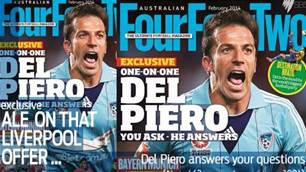WHAT'S the story behind the new adidas brazuca World Cup ball? We spoke to adidas football hardware boss Matthias Mecking to tell us...
What was the inspiration behind the design of brazuca?
We wanted to encapsulate everything about Brazil and their passion for the game in the design and we did this through three main aspects. Firstly, the vibrant colours on the ball reflect those of the Brazilian flag as well as the official logo of the FIFA World Cup. Next we look at the colourful wish bands that the locals wear and this is brought across by the rhythmic and fluid use of the colours on the ball. Finally, we also incorporated stars into the design and again this harks back to the national flag but also reflects their status as World Cup winners.
How long have you been working on brazuca?
The testing process is critical and we actually spent two and a half years developing and refining the ball making it the most tested ball we have ever created. We used 600 players in total across 30 professional and national teams in 10 countries and that gives an indication of how thorough we were in testing the ball. We also used a version of the ball in real-match situations earlier this year during the U20 World Cup and the friendlies between Argentina vs Sweden and Israel vs Finland which means the construction has been used in competitive games already so we are confident that we have a ball that will be fitting for the World Cup.
What is new about brazuca?
Apart from it being our most tested ball ever, brazuca combines the best technology from the popular Tango 12 and UEFA Champions League balls as well as a groundbreaking six-panel design, which improves symmetry, uniformity and efficiency. The new design elements boost performances on the pitch but also simplifies manufacturing and improves quality.
So what does this all mean for the players?
It will feel similar to balls they are used to playing with but the technological changes we have made will provide improved grip, touch, stability and aerodynamics on the pitch.
Have you had any feedback from the players?
We tested the ball with over 600 players including non-adidas sponsored players and the feedback from all the players involved has been very positive. Overall, the majority of players agreed that it allowed for good close control and was consistently responsive to their touches while also offering a good transition of power and stable flight when striking it.
Will it perform the same in all the different parts of Brazil as it’s a huge country?
The ball has gone through our most intense testing ever – a two-and-a-half-year programme covering Brazil’s diverse seasons, climate and altitude conditions. We tested brazuca in Rio, where conditions were warmer, and São Paulo, where it was cooler, in June and July to replicate the conditions during the tournament. Temperatures ranged from the mid-30s to as low as 5°, which is as cool as it gets in Brazil at that time of year.
In our European testing, the temperatures were even more extreme, ranging from -15° to 35°.
The ball was also tested at altitude – at 1300m in São Paulo and 1600m in Colorado in the United States. It was also tested on dry, slightly damp and very wet pitches, and in windy conditions, gusts and heavy rain.
brazuca performed extremely well in all these tests – making it the perfect ball for all conditions.
We’ve also enlisted the expert opinions of clubs including Fluminense and Palmeiras. Everyone has given us extremely positive feedback.
Finally, where did the name come from?
The ball was actually named brazuca back in September 2012 following a public vote in Brazil. One million football fans got involved and the name brazuca came out on top. The actual word “brazuca” is an informal local term which means “Brazilian”, or to describe the Brazilian way of life.
Copyright © FourFourTwo Australia . All rights reserved.
Related Articles

Iceland frustrate Messi’s fourth world cup campaign

brazuca launch pics













